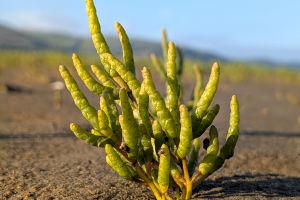Plants, though stationary, have an incredibly efficient way of absorbing nutrients to ensure their growth and survival.
Their ability to survive in diverse environments and thrive in various conditions hinges on how they absorb water, minerals, and other nutrients. But how do plants manage to get the nutrients they need for growth, reproduction, and overall vitality?
This article delves into the fascinating process of nutrient absorption in plants, uncovering the mechanisms, structures, and biological processes involved.
Roots: The Primary Gatekeepers of Nutrients
The roots are the most critical structures in a plant's nutrient absorption process. They act as the plant's underground "food factory," drawing water and dissolved minerals from the soil. The majority of nutrient absorption occurs in the root hairs—tiny, hair-like extensions of the root cells that increase surface area for absorption.
Roots absorb essential minerals, such as nitrogen, phosphorus, potassium, and calcium, all of which are crucial for plant growth. Water, a key component for transporting these minerals, also enters the plant through the roots. The roots' vascular system transports water and nutrients to other parts of the plant, facilitating essential biological functions like photosynthesis and growth.
Soil: The Source of Essential Nutrients
Soil quality plays a pivotal role in how well plants can absorb nutrients. The soil is home to a complex mixture of water, air, minerals, and organic matter, all of which contribute to a plant's nutrition. The mineral content of soil determines how rich it is in elements that plants need for growth.
Each nutrient absorbed from the soil serves a different function:
• Nitrogen (N): Promotes leaf and stem growth.
• Phosphorus (P): Vital for root development and energy transfer.
• Potassium (K): Essential for overall plant health and disease resistance.
• Calcium (Ca): Strengthens cell walls and helps maintain the plant's structure.
Soil also contains organic matter, like decomposed leaves and animal matter, which supplies additional nutrients like trace elements (iron, magnesium, zinc) that are also vital for the plant's growth.
The Role of Water in Nutrient Transport
Water is more than just a vehicle for transporting nutrients—it is an essential part of the nutrient absorption process itself. As water is absorbed through the roots, it moves upward through the plant's vascular system in a process known as transpiration. This continuous flow of water helps to transport dissolved minerals from the roots to the stems, leaves, and flowers.
In addition to nutrient transport, water is vital for the process of photosynthesis, where plants use sunlight, water, and carbon dioxide to create glucose—a key source of energy. Without adequate water, plants cannot efficiently absorb or utilize nutrients, and growth becomes stunted.
Active and Passive Nutrient Transport Mechanisms
Plants employ two primary types of nutrient transport: passive and active transport.
• Passive Transport: In this process, nutrients move through the plant's tissues by diffusion. This occurs when the concentration of nutrients is higher in the soil than inside the plant, allowing minerals to move from the soil into the plant without using any energy. Osmosis, where water moves through a semi-permeable membrane from an area of lower concentration to higher concentration, is a key example of passive transport.
• Active Transport: This process requires energy, usually in the form of ATP (adenosine triphosphate). In situations where the concentration of nutrients inside the plant is already high, the plant needs to "push" more nutrients into its roots against the concentration gradient. This energy-intensive process occurs through specialized protein channels in the plant's cell membranes.
Mycorrhizal Fungi: A Symbiotic Relationship
Plants and fungi share a fascinating symbiotic relationship, particularly in the form of mycorrhizal fungi. These fungi form a network of hyphae that surround and invade plant roots, extending the root system and increasing the plant's ability to absorb water and minerals, especially phosphorus. In return, the plant supplies the fungus with sugars produced through photosynthesis. This mutualistic partnership significantly boosts the plant's nutrient absorption efficiency, especially in nutrient-poor soils.
Adaptations for Nutrient Absorption in Extreme Environments
Plants are incredibly adaptable when it comes to surviving in extreme environments where nutrients may be scarce. For example, desert plants like cacti have developed extensive root systems that can reach underground water sources or store water in their tissues. In contrast, plants in nutrient-rich environments like rainforests may have smaller, less developed roots but take advantage of the abundant nutrients available.
Additionally, some plants have developed mechanisms to obtain nutrients in unconventional ways. For instance, carnivorous plants like Venus flytraps and pitcher plants trap and digest insects to obtain nitrogen—a nutrient that is often in short supply in their native acidic soils.
How Plants Make the Most of Their Nutrient Resources
While plants can absorb a wide range of nutrients, it's not just about having access to nutrients—it's about making the most of them. Plants have evolved intricate mechanisms to optimize nutrient use. For instance, they can regulate the opening and closing of stomata (tiny pores in the leaves) to control water and nutrient loss. Additionally, they can prioritize certain nutrients depending on their growth stage or environmental stress. For example, a plant may focus on absorbing nitrogen to boost leaf growth when it's young and then shift to absorbing phosphorus when it's ready to flower.
Conclusion: The Marvel of Plant Nutrition
In essence, plants rely on a remarkable system of nutrient absorption involving their roots, soil, water, and specialized transport mechanisms. Understanding how plants absorb and utilize nutrients helps not only in growing healthier plants, but also in conserving resources and improving sustainability. The next time you admire a lush garden or a thriving houseplant, you'll have a deeper appreciation for the complex, yet efficient, processes that keep them alive and growing. The world of plant nutrition is a testament to nature's ingenuity and adaptability—a true marvel of life on Earth.


